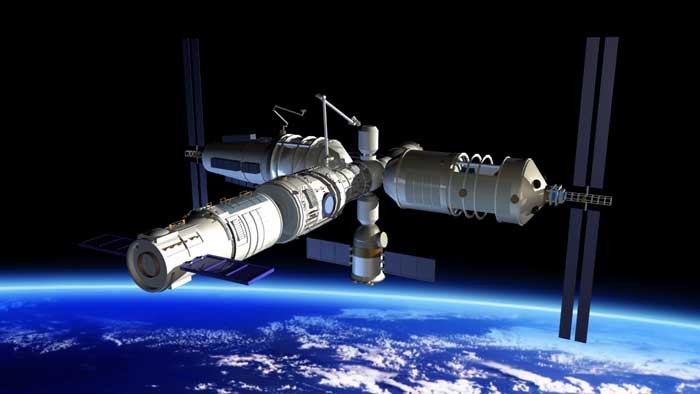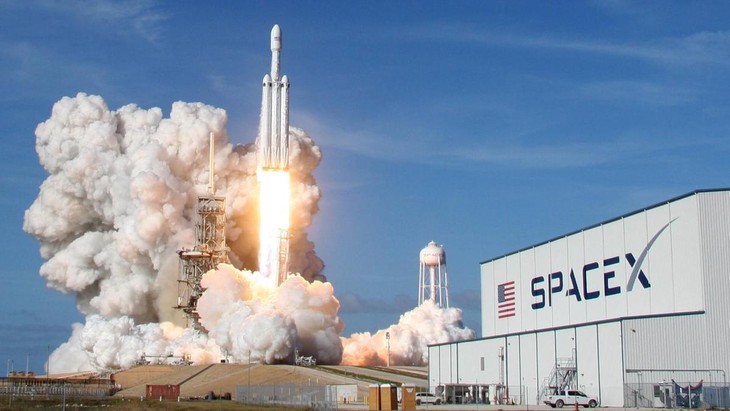|

Terry F. Buss, PhD
Fellow, National Academy of Public Administration
Volunteer on Fulbright School Advisory Group
|
Russian space accomplishments spurred the US to become involved in space, eventually landing Americans Neal Armstrong and others on the Moon in 1969. Space program accomplishments became one way of keeping score as to who was winning the Cold War.
How the space race changed
In the last few years, the space race has launched again, but in very different ways. No longer are Russia and the US the only competitors. China now competes with the US (China landed a spacecraft on the dark side of the moon in January), while Russia has fallen somewhat behind. Other governments, Japan, Israel, India, and European Union, not to mention North Korea and Iran are becoming more involved. In April, Israel crashed a rocket on the Moon, marking the first private lunar landing of an NGO SpaceIL.
The space race is not only the province of government, but now features private sector, profit-making companies competing with one another and for government contracts. Amazon.com, a private firm, has just entered the space race: it has developed “Project Kuiper” which uses a “constellation” of 3,236 “low Earth satellites” capable of providing high-speed broadband to underserved populations globally.
Governments are now partnering with one another and with private companies to share technology and to reduce costs and enhance capabilities. The European Space Agency has the most complex partnership with 22 member countries funding its operations. The International Space Station(ISS),launched in 1998, is a consortium on Russia, US, Japan, Canada and ESA. Because of Russian and US conflicts, the ISS partnership is on shaky ground.
SpaceX, the Elon Musk private company, recently launched a spacecraft (a space taxi) that successfully docked with the ISI. Previously, only Russia had provided this service. To make matters worse for Russia, Boeing, also a private company, is already testing its “Starliner” spacecraft to compete with Russia commercially.
Globally, the annual market for space military and commercial industries is $350 billion and is predicted to reach $1 trillion by the 2040s.
Weaponization of space
Presently, governments are weaponizing space, either for defensive or offensive purposes. US President Donald Trump has made space a priority. A Defense Intelligence Agency (DIA) report (2019) suggests that China and Russia pose a major threat to the US from space. Trump has asked Congress to fund a new Space Force to counter threats. President Barack Obama (2009-2017) scaled back government space programs in favor of private ones. The Space Shuttle Challenger disaster (1986), killing 7 astronauts also dampened the space program earlier on.
|

Tiangong 1, China's first prototype space station.
|
China and Russia reorganized their militaries beginning in 2015 to integrate new space-based capabilities. DIA concludes that “Russia views America’s perceived dependence on space as the ‘Achilles heel’ of US military power…” which can be exploited.
Weaponizing space is changing the way wars will be fought: more like Star Wars than classic tank battles or guerrilla insurgencies. Satellites not only use lasers and electronic weapons, but also cyber-attacks that disable software and computer hardware. The US has 167 military satellites.
The race adds new players who have space-based weapons. North Korea and Iran are developing weapons that will “jam” satellite communications and render GPS systems inoperative. Iran has created a Space Research Institute for this purpose.
Combatant nuclear powers India and Pakistan are turning to space to further enhance their military capabilities. Recently, India became only the fourth country to destroy a satellite with an anti-satellite missile.
And, it likely increases chances war will intentionally or accidently occur. Technology allowing a country to take control of another country’s satellites is now available. Robots on satellites are being deployed.
Cyber security issues
All kinds of security issues have been created because of space-based operations. Surveillance is one. Countries are now exploring ways to put telescopes, radar and sensing devices in space to gather intelligence, track, surveil and target. At the same time, countries are racing to develop technology to “counter” surveillance. Countries want to know if an adversary has fired a missile, for example.
Another issue is use of cyber weapons against satellites. Malware can shut down operations or redirect them, for example. A 2017 US Defense Department report revealed that most of the US weapons arsenal could (and was) easily be attacked using simple IT tools. The US allegedly shut down Iran’s nuclear weapons program in 2010 using a “worm,” Stuxnet.
Governments are not the only ones employing cyber warfare. In 2013 during the Iraq War, terrorist groups where able to shutdown a private company providing satellite services to the US military.
Patricia Lewis of Chatham House points out that much of the critical infrastructure in space are operating on old technology that has yet to be modernized to withstand cyber-attacks.
Space junk and debris
Space is becoming inundated with satellite traffic. In 2019, according to the Union of Concerned Scientists, there were 1,957 satellites in orbit, 849 from US, 284 China, and 672 other. There are nearly 3,000 inactive satellites and 500,000 smaller pieces of junk in space.
In some ways it would be worse to manage objects in space than air traffic control at an airport. Maneuvering around debris is complicated. The ISS requires 30 hours to execute a direction change. The problem is so severe that nations “register” larger bodies they launch into space to keep track of them. But, unlike air traffic control, no entity is managing them.
One can imagine a war starting because one satellite inadvertently crashes into another: sort of space “road rage.”Famously, in 2009, a Russian and American satellite collided.
Controlling weaponization of space
Unfortunately, there are no internationally-agreed upon laws to control weaponized space. The last effort was the 1967 Outer Space Treaty prohibiting weapons of mass destruction (nuclear weapons) on satellites and planets and asteroids. The Treaty is woefully obsolete.
The Treaty grew out of US and Russia efforts to devise a minimal set of “principles” to guide space-based activities. Perhaps nations can come together again.
But, international treaties are difficult to enforce. Chinese efforts in militarizing the shoals and reefs in the East Sea have been adjudged by a UN Arbitration Court to have violated the UN Convention on the Law of the Sea in 2016, but activities persist.
And, treaties are easy to walk away from. The US and Russia recently walked away from the Intermediate Range Nuclear weapons treaty; and the US from the mutual defense treaty with Ukraine.
The good news: with the plethora of technological advancements, it is more difficult for countries to hide their military activities, either in space or on the ground. North Korea’s nuclear program has been easily surveilled by the US, for example.
 A SpaceX Falcon Heavy rocket lifts off on a test run in February, 2018. (Photo: Reuters) A SpaceX Falcon Heavy rocket lifts off on a test run in February, 2018. (Photo: Reuters) |
Some issues have eluded treaty makers: what is a weapon? “Dual use” issues, where commercial technological developments can be converted to military uses, pose a big problem, for example. Satellite inspections stations, refueling, repair and laser peaceful applications can be turned against adversary spacecraft. Countries pursuing nuclear weapons programs often do so using civilian technology converted into weapons.
The UN annually hosts member country meetings on space weaponization, trying to reach a comprehensive agreement on disarmament and security. The US, under Trump, has taken an aggressive stand against the efforts. The US does not like the voluntary provisions of agreements being discussed, neither does it like the lack of strong enforcement, especially penalty mechanisms.
Additionally, the US, according to some critics, may be concerned that it has fallen behind in its space program (after Obama cutbacks in defense, science and intelligence) and that it needs to catch up. But, this is unlikely: the US is more concerned with having a verifiable and enforceable treaty.
There likely will not be much progress on space weaponization agreements in the near future until all those involved agree on verifiability and enforcement. In the meantime, the race to commercialize and weaponized space will continue unabated.
In my view… “Gene Cernan was the last human to walk on the moon. Before the Apollo 17 astronaut climbed aboard the lunar module for the return to Earth way back in 1972, he took one last look at the rolling, gray mountains in the distance, and said, ‘God willing, as we shall return, with peace and hope for all mankind.”
Terry F. Buss, PhD